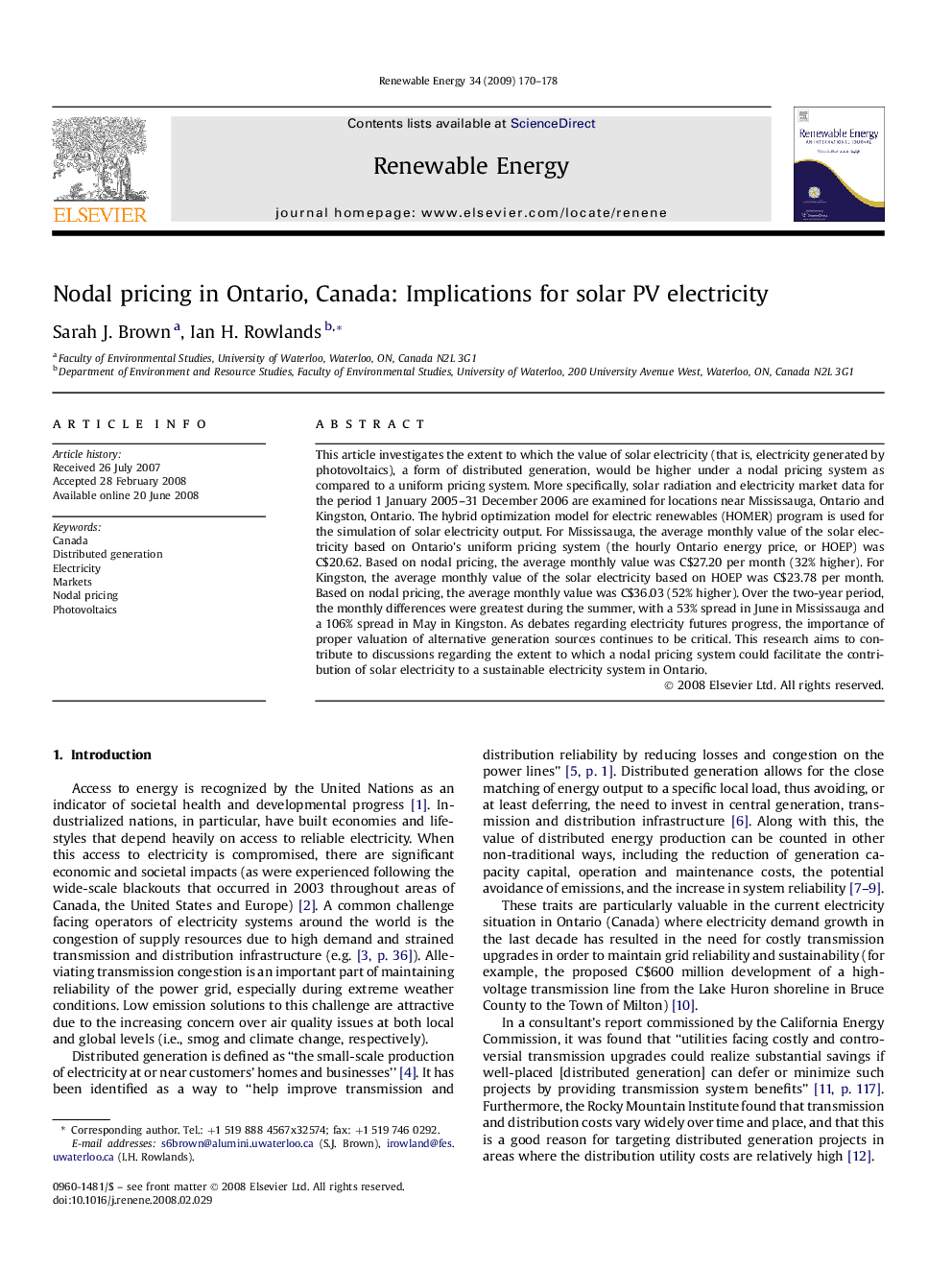| Article ID | Journal | Published Year | Pages | File Type |
|---|---|---|---|---|
| 302583 | Renewable Energy | 2009 | 9 Pages |
This article investigates the extent to which the value of solar electricity (that is, electricity generated by photovoltaics), a form of distributed generation, would be higher under a nodal pricing system as compared to a uniform pricing system. More specifically, solar radiation and electricity market data for the period 1 January 2005–31 December 2006 are examined for locations near Mississauga, Ontario and Kingston, Ontario. The hybrid optimization model for electric renewables (HOMER) program is used for the simulation of solar electricity output. For Mississauga, the average monthly value of the solar electricity based on Ontario's uniform pricing system (the hourly Ontario energy price, or HOEP) was C$20.62. Based on nodal pricing, the average monthly value was C$27.20 per month (32% higher). For Kingston, the average monthly value of the solar electricity based on HOEP was C$23.78 per month. Based on nodal pricing, the average monthly value was C$36.03 (52% higher). Over the two-year period, the monthly differences were greatest during the summer, with a 53% spread in June in Mississauga and a 106% spread in May in Kingston. As debates regarding electricity futures progress, the importance of proper valuation of alternative generation sources continues to be critical. This research aims to contribute to discussions regarding the extent to which a nodal pricing system could facilitate the contribution of solar electricity to a sustainable electricity system in Ontario.
